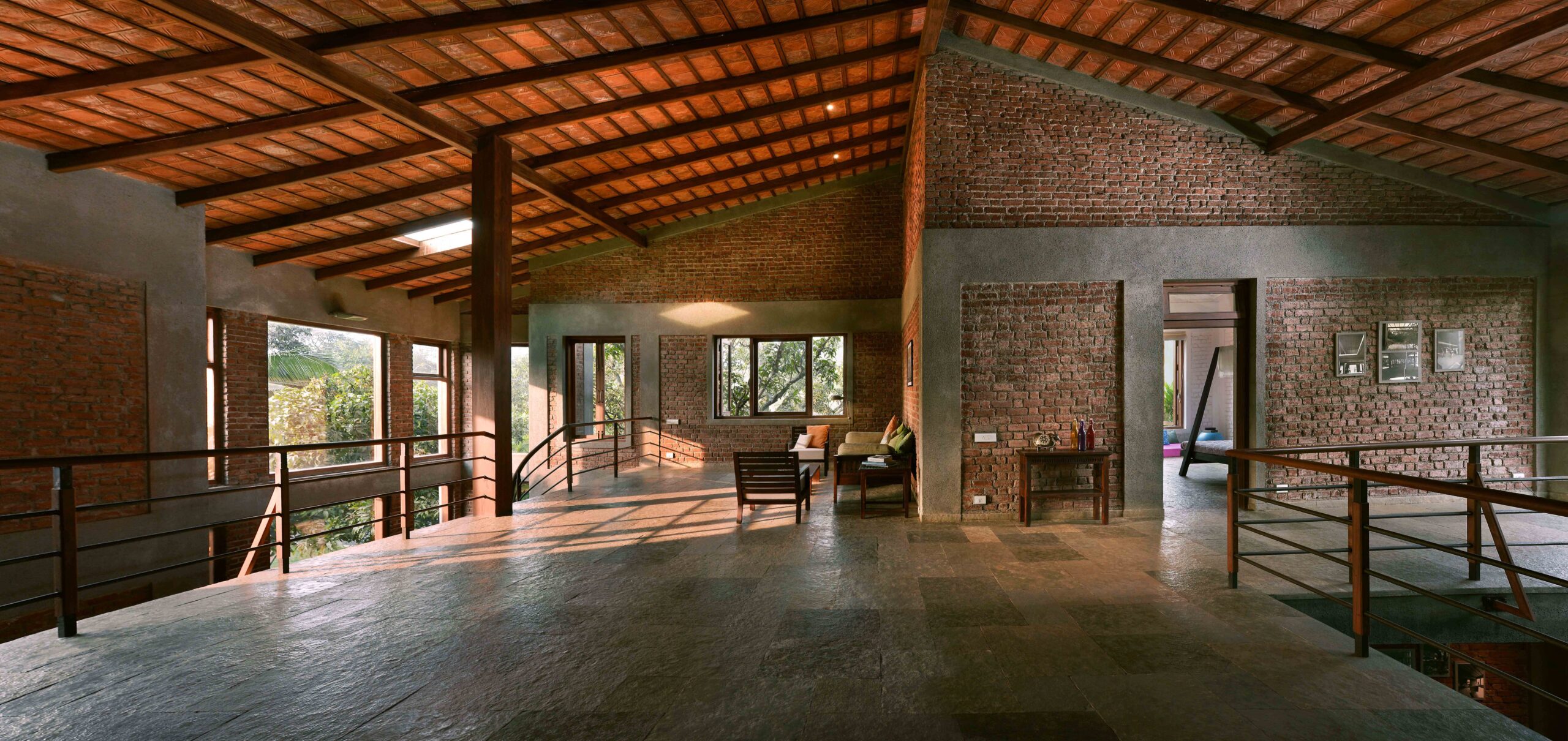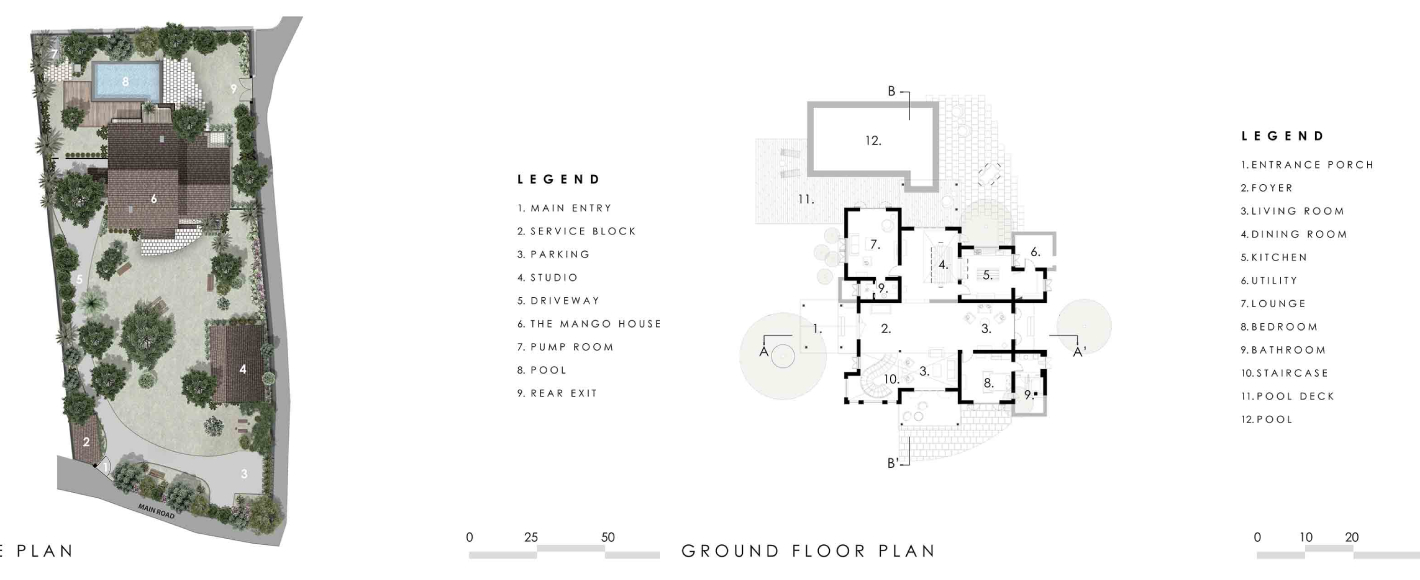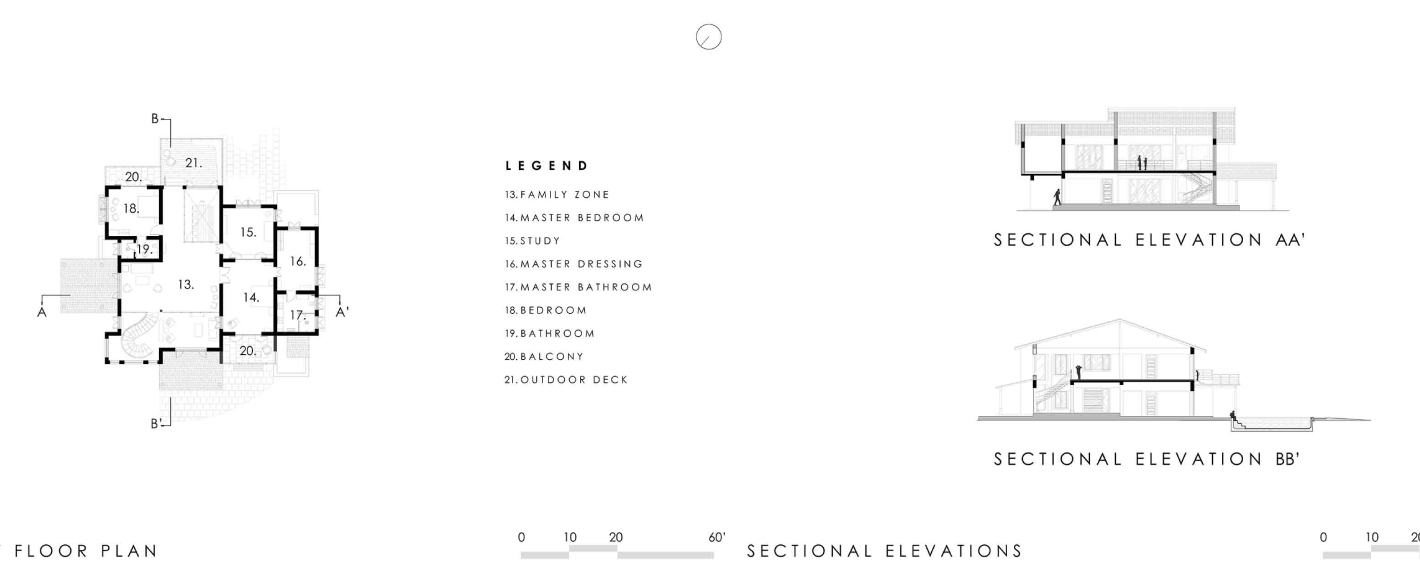The Mango House
Sailing in a ferry far from the madding crowds of Mumbai, towards the quaint coastal town of Alibaug; the rattle and hum of the city is silenced.
The prelude to the experience, that is The Mango house. It is set in motion on arrival – a walk down the sunlit pier and a short drive from the port along a long silent dirt road under a canopy of lush green trees.
As one steps through the gates it takes a moment to look past the trees and find the house sitting almost inconspicuously between them.
The age-old inhabitants of the site – the mango trees – governed the simple form of the house. As response to the resolute and intricate network of roots, careful attention was paid to leave them unharmed and unhampered. The footprint furthermore makes them an active part of the design by enabling them to act as natural shaded extensions of the house.
At two storeys high, the house allows the branches of the trees to spill over onto the deck, overlooking the pool. Multiple large glass fenestrations line the exposed brick walls, casting reflections of the world outside – flooding the interiors with daylight and shadow trails, allowing the experience to percolate within. The windows along with the four expansive entrances along the north – south and east- west axes further blur the lines between the inside and the outside.
The design responds to its surroundings and makes a conscious effort to reconnect with the natural environment. The rain drops trailing down windows, the dappled reflections of sunlight bouncing off panes and the gentle breeze running through the spaces – all pleasantly add to the experience and quality of the space.
The unwavering desire to allow the house to blend in and become one with the land is accentuated by the earthy tones of exposed brick and concrete that complement the verdant landscape around it. An experience which is carried forward into the abode.
The journey through the different spaces are marked by a defined sense of transition between them – It could be as subtle as the sound of footsteps, on the gravel, following the user till the threshold, or even the change in warm hues of the exposed bricks, in the communal spaces, to white plastered brickwork, in the private spaces. Brick, Concrete, Metal, Stone, Terracotta and Wood – A medley of natural materials come together to form a whole. The use of stark, raw and earthy materials entices the user and beckons them to engage with the house – through the myriad sights, sounds and textures that coalesce to form memories. A feeling of home.
While inside, eyes are drawn to a suspended steel staircase that seems like a conversation between the two levels of the house. Double heighted spaces not only act as interesting vantage points but also ensure ventilation across the axes. The semi-private and private spaces rise up to the second level and are reserved for the family of four. Spaces that remain interwoven with the lower level yet become characteristic to each of the resident’s individual sensibilities and passions.
The design and articulation of spaces take into account the privacy of the inhabitants. The Lower Level acts as an intimate yet informal zone where one could wander finding places for casual conversations or find their own little corner to lean back – against the embrace of the cold brick wall and sit reading a book. A strong connect of the dining with the kitchen and its visual connect with the pool deck gives rise to a dynamism that allows each space to spill out into the other – unhindered and welcoming. Every space becomes a stage for new memories to play out. Where every space relates with the next.
Alluding to the vernacular, a rich sense of culture and tradition is ever present – The Mango House helps the city-dwelling family to connect with nature by being organic in both spirit and content. A space where Design meets Life – bridging the growing gap between us and the natural environment – not interfering with the course of nature, but rather inviting it in as an extension to the house. The design speaks of modest desires and smart aesthetic appeal, all the while serving as a place to call ‘home’.
Image Gallery
Featured In
Amit Pasricha | @panoramist








